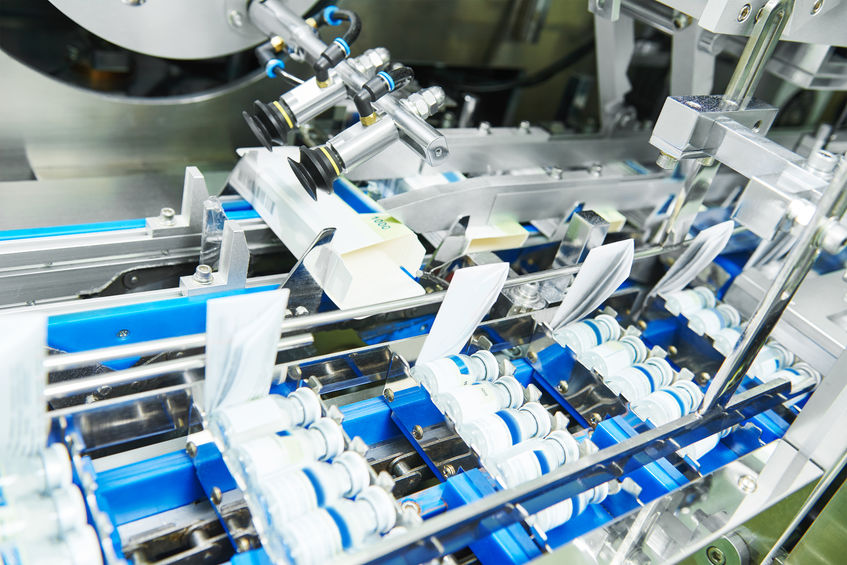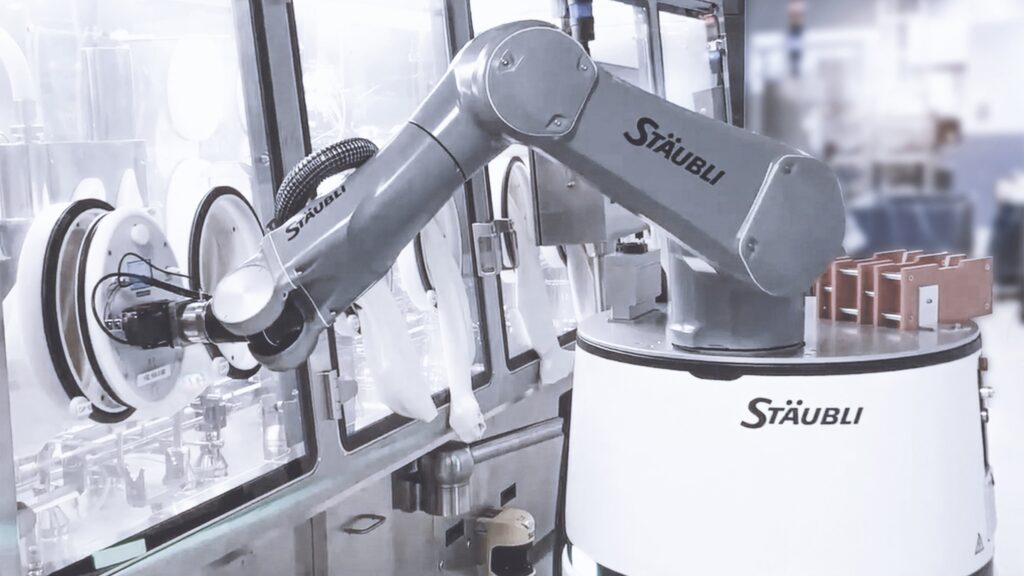Automation Alleviates Pharmaceutical Manufacturing Challenges
Following the COVID-19 pandemic, pharmaceutical manufacturers have felt pressure like never before. In addition to the demand for the rapid development and distribution of COVID-19 vaccines, the pharma industry is still experiencing labor shortages and a shift from one-size-fits all medications to more personalized treatments with delivery methods, such as pre-filled syringes, that require more flexible, small-scale manufacturing.
In a recent whitepaper, 2022 Pharmaceutical Manufacturing: Trends Shaping the Future, published by the Association for Packing and Processing Technologies (PMMI), 33% of responding pharmaceutical companies stated that staffing is still an issue and the report cited labor as the second greatest challenge for pharmaceutical manufacturers in 2023. In addition, many respondents noted the shift toward personalized medicines, injectables and parenteral (non-digestive) drug administration as upcoming trends that will shift the way pharmaceuticals are produced from large batches to small-scale dosages that demand flexibility.
The pharmaceutical industry is addressing these challenges with the use of more automated and digitalized solutions for their manufacturing processes. As a matter of fact, PMMI’s whitepaper says that 75% of pharmaceutical companies plan to increase the use of automated solutions to curtail the impact of labor shortages and provide more flexibility, accuracy and product safety.

How Automation Helps
With the ongoing labor shortage and the demand for more personalized medications, alternative drug delivery systems and rapid production expectations, pharmaceutical manufacturers need to adjust their existing production methods. Automation can help optimize processes by providing higher throughputs, increased efficiency, more flexibility, reduced changeover times, quality consistency and enhanced accuracy, while also increasing traceability and reducing contamination.
Higher throughputs and increased efficiencies: Robots and automated equipment handle repetitive tasks at greater speeds than human workers and can perform around the clock without breaks, filling the gaps created by a shrinking workforce and allowing pharmaceutical manufacturers to increase their typical throughput. In addition, processes such as filling, packing and inspection can be done faster, as well as more efficiently and cost effectively. The precision and accuracy provided by automated equipment also cuts down on waste attributed to damaged or defective products, further increasing throughput and cost efficiency.
Greater flexibility and reduced changeovers: With the rise of personalized medications, injectables and parenteral delivery methods, equipment must be more flexible and packaging and labeling must be accurate in order to provide safe and effective medications to patients. Automated solutions are flexible and can easily be modified to accommodate the frequent changeovers required by the trend toward a wider variety of treatments being produced in smaller batches. Not only is automated equipment more flexible, but its speed, ability to provide 24/7 processing and cost effectiveness are making personalized medicine more commercially viable and affordable for patients. Another advantage when producing smaller, personalized batches is that automated equipment reduces human interaction and, therefore, human error. This precision and consistency during frequent product changeovers, weighing and inspections, also ensures safe, consistent and high-quality products for consumers.
Consistent quality and improved accuracy: In addition to the accuracy and precision provided by automated solutions due to the lack of human error and the repeatable consistency they offer, many automated inspection systems include machine learning and artificial intelligence, which can spot defects and inconsistencies with more accuracy and reliability than human workers. Because automated solutions are highly precise, they eliminate the possibility of errors during weighing, blending and tableting of solid dosage forms, filling liquid pharmaceuticals and syringes and general packaging of pharmaceutical products. In addition, with less human interaction during manufacturing, inspection and handling, the risk of product contamination is reduced significantly.
Improved visibility, traceability and safety: Automated solutions combined with digitalization and other modern technologies also allow more timely and accurate end-to-end tracing from raw material sourcing to processing to packaging right on through to final delivery. Electronic batch records, RFID technologies, data collection and other automated management techniques allow pharmaceutical manufacturers and packagers to locate inefficiencies, errors and issues throughout the supply chain and prevent unsafe or problematic medications from reaching consumers.

Where to Apply Automation in Pharmaceutical Manufacturing?
As automated technologies continue to advance and become more affordable and the pharmaceutical industry endures both an evolution and labor shortages, robots and automated equipment are demonstrating the potential to accommodate the new face of pharmaceutical production with efficiency, cost effectiveness and greater accuracy and quality. Currently, automation is being used in:
- Processing systems such as dryers, granulators, mixers and agitators.
- Tablet compressing, coating and spray coating equipment.
- Liquid dosing applications, encapsulation, bottle filling and capping.
- Weighing and packaging operations.
- Conveyor and sorting systems.
- Inspection, product monitoring, quality management and distribution.
- Tracking and traceability for counterfeit prevention, regulatory compliance and recall safety.
Automation and robotics are helping improve the efficiency of all stages of pharmaceutical development, manufacture, filling, packaging and delivery with the speed, flexibility and cost effectiveness needed to provide higher quantities of medications and smaller, more-personalized treatments with individualized delivery modes. They are also highly accurate and eliminate the possibility of human error in weighing, blending and packaging of drugs, medications and other regulated pharmaceutical products.
With all the advantages provided by automation, pharmaceutical manufacturers that fail to implement automated solutions will likely fall behind the competition, while those who embrace automation will successfully adapt to the challenges presented by labor shortages and new trends in medicine because it allows them operate faster and in a more optimized, cost-efficient manner, despite the obstacles currently faced in the industry.
For more information on automated solutions for the pharmaceutical industry, please contact JHFOSTER.
